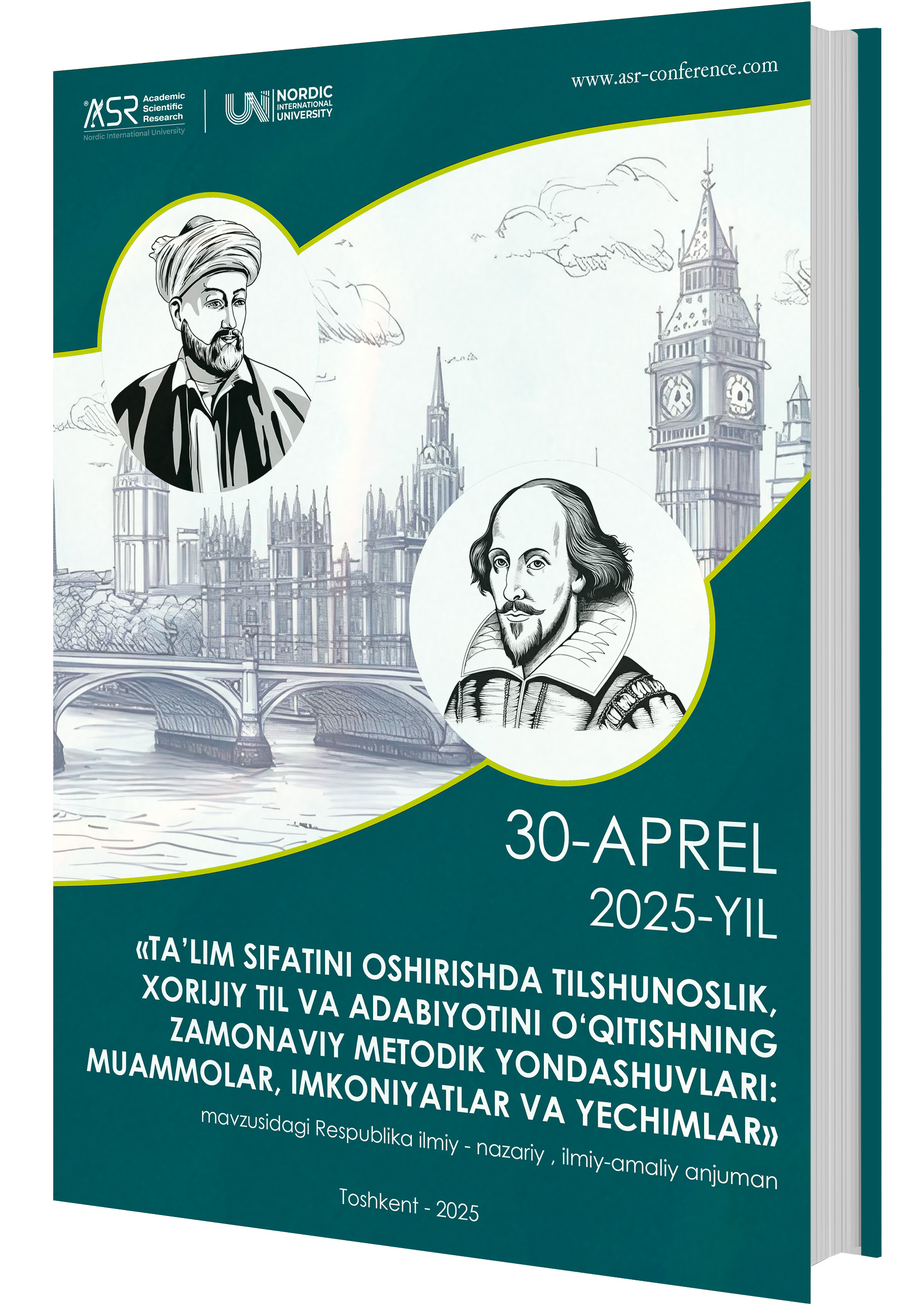DIACHRONIC AND SYNCHRONIC ASPECTS OF THE EVOLUTION OF THE ENGLISH AND UZBEK LANGUAGES
Аннотация
This study analyzes the diachronic and synchronic aspects of the English and Uzbek languages, focusing on their historical development and modern status. It examines how socio-political changes, cultural influences, and technological advancements have shaped these languages. While English has evolved under the influence of Latin, French, and other European languages, Uzbek has enriched its vocabulary through long-standing interactions with Arabic, Persian, and Russian. The research highlights historical transformations, contemporary linguistic trends, and the impact of globalization on both languages.
Библиографические ссылки
Baugh, A.C., & Cable, T. (2002). A History of the English Language. Routledge.
Crystal, D. (2003). The Cambridge Encyclopedia of the English Language. Cambridge University Press.
Graddol, D. (2006). English Next: Why Global English May Mean the End of ‘English as a Foreign Language’. British Council.
Jo‘rayev, N. (2012). The Developmental Stages of the Uzbek Language. Tashkent: Fan.
Mahmudov, N. (2008). Fundamentals of Uzbek Linguistics. Tashkent: Uzbekistan.
Sodiqova, G. (2020). The Current State and Development of the Uzbek Language. Tashkent: Fan.
Загрузки
Опубликован
Выпуск
Раздел
Лицензия
Copyright (c) 2025 Sehriyo Solijonova

Это произведение доступно по лицензии Creative Commons «Attribution-NonCommercial» («Атрибуция — Некоммерческое использование») 4.0 Всемирная.
Условия лицензии
Эта работа доступна под лицензией Creative Commons Attribution-NonCommercial 4.0 International License. Чтобы просмотреть копию этой лицензии, посетите http://creativecommons.org/licenses/by-nc/4.0/ или отправьте письмо по адресу Creative Commons, PO Box 1866, Mountain View, CA 94042, США.
По этой лицензии вы можете:
Поделиться — копируйте и распространяйте материал на любом носителе и в любом формате.
Адаптируйте — делайте ремиксы, трансформируйте и дорабатывайте материал.
Лицензиар не может отозвать эти свободы, если вы соблюдаете условия лицензии. На следующих условиях:
Атрибуция. Вы должны указать соответствующую ссылку, предоставить ссылку на лицензию и указать, были ли внесены изменения. Вы можете сделать это любым разумным способом, но не таким образом, который бы предполагал, что лицензиар одобряет вас или ваше использование.
Некоммерческое использование — вы не имеете права использовать материал в коммерческих целях.
Никаких дополнительных ограничений. Вы не имеете права применять юридические условия или технологические меры, которые юридически запрещают другим делать все, что разрешено лицензией.





